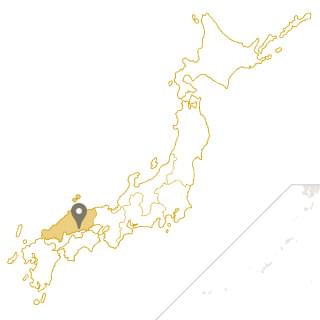The town of Yakage in the southwestern part of Okayama Prefecture was developed as an lodging district connecting Osaka and Fukuoka prefectures during the Edo period (1603-1868), and it is still lined with historic buildings. Taking advantage of its mild and dry climate, the town also produces a variety of fruits such as pears and grapes, and vegetables such as asparagus and cabbage. Why not spend a relaxing time in this town where you can feel the richness of nature and history?
Yakageya INN&SUITES
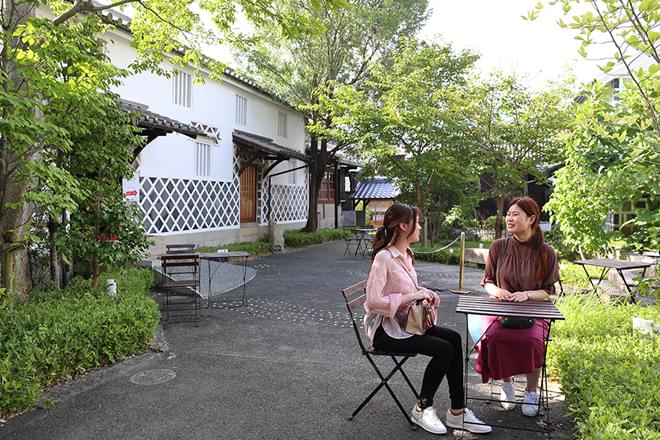
An accommodation facility renovated from an old private house from the Edo period. It consists of a main building and an annex with hot spring baths. There are a total of 14 guest rooms, all with different layouts and room concepts. Female guests staying in the main building may rent colorful yukata, a type of traditional Japanese kimono. Choose your favorite yukata from a selection of five or six different styles, and head to the hot springs in the annex which has an indoor and outdoor bath. In the hot spring, you can stretch out and relax in the spacious bathtub. For dinner and breakfast, you can enjoy seasonal dishes from Yakage-cho and the Setouchi area.
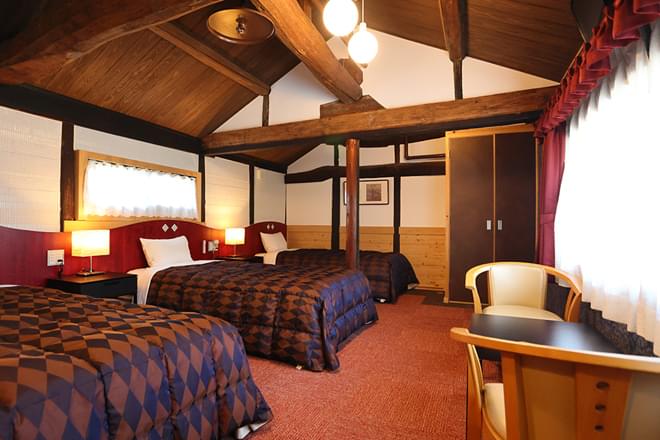
"Momiji" room shown in the photo was renovated from a wooden Nagayamon gate, with impressive beams on the ceiling. The toilet and bath are on the first floor, and the bedroom and kitchen are on the second floor. From the window, you can see the Oda River flowing through the center of Yakage-cho.
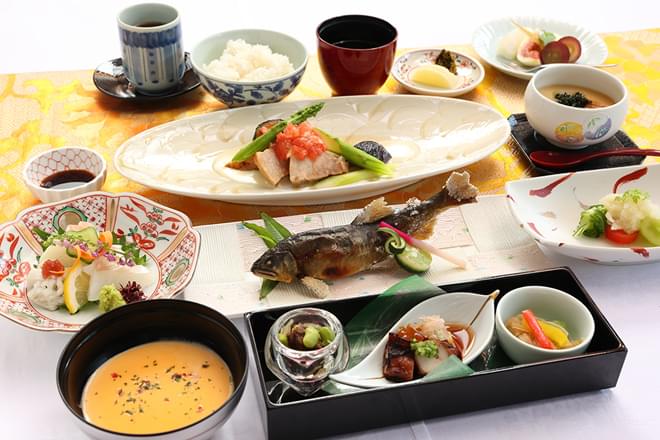
The dishes are full of seasonal local delicacies. An example of a main dinner dish is tender Bisei black pork from the neighboring town of Ibara City, with fragrant sauteed garlic and vegetables from Yakage-cho.
- Name:
- Yakageya INN&SUITES
- Address:
- 3050-1, Yakage, Yakage-cho, Oda-gun, Okayama
- Telephone number:
- 0866-82-0111
Yakage Machiya Exchange Center
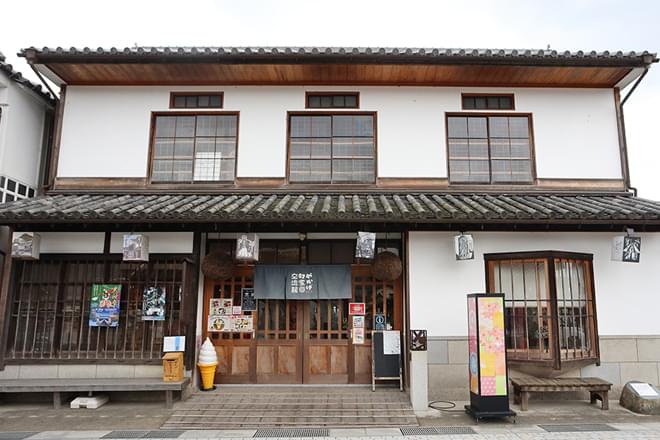
The Yakage Machiya Exchange Center sells local products and souvenirs, and is an impressive building that was originally used as a sake brewery in the 1920s. Although tourist information is mainly provided by the town's tourist information center Yakage Visitor Center "Tonya", pamphlets and maps are also available at Yakage Machiya Koryukan (Exchange Center). Yuzu Beshi (a famous confectionery with rich flavors of yuzu and miso), traditional handcrafts, and goods featuring Yakage's tourism ambassador Yakappi are also available. There is also a café in the building, which is convenient for taking a break.
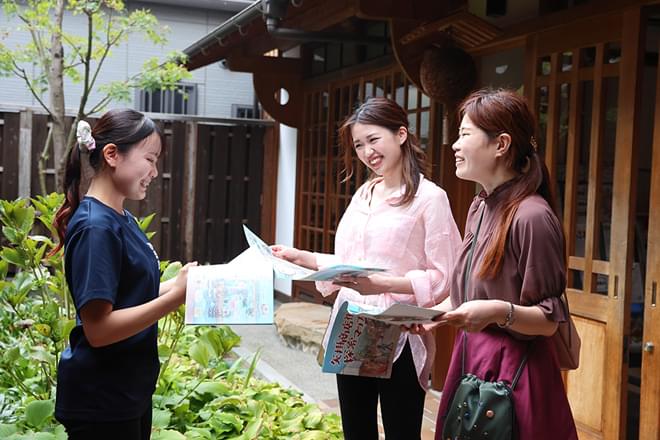
Using an exploration map created by a local illustrator, the staff can answer any questions you have about Yakage-cho. Yakage-cho is a town dotted with historical buildings alongside fashionable cafes, making it a fun place to visit.

Vegetables, sweets, and traditional handicrafts are sold here. Among the most popular items are souvenirs depicting Yakage's tourism ambassador, Yakappi. Many of them are suitable for everyday life, such as a teacup (1,200 yen) and a plate (500 yen). People are soothed by the cute and adorable Yakappi.
- Name:
- Yakage Machiya Exchange Center
- Address:
- 2639, Yakage, Yakage-cho, Oda-gun, Okayama
- Phone number:
- 0866-63-4446
Daitsuji Temple

Daitsuji Temple, a Soto sect temple said to have been founded in 743, was moved to its present location around the 1190s to 1200s. The garden on the temple grounds is famous as a scenic beauty designated by Okayama Prefecture. It is said that the garden was created in the late Edo period (around 1830-1843) over the course of 20 years. If you apply in advance, you can experience zazen (Zen meditation) for about 30 minutes to straighten your posture and unify your mind. Admission fees are 400 yen for adults and free for children under junior high school age. Please confirm the fee for the zazen experience in advance.
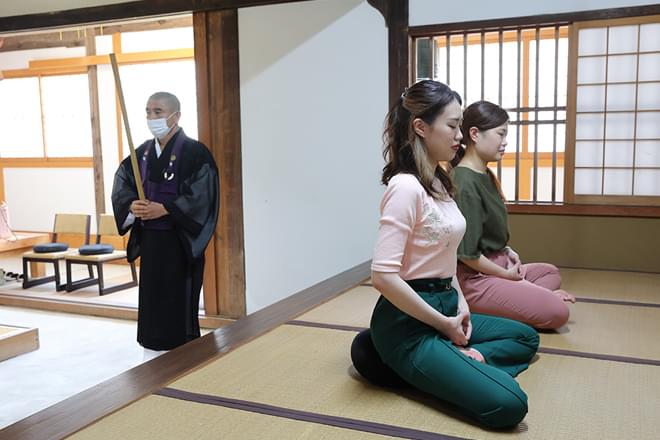
Zazen is conducted in the monks' hall. Facing a wall, the participants meditate and spend about 30 minutes in silence. By consciously creating a time to not think about anything, you can refresh your mind and body.
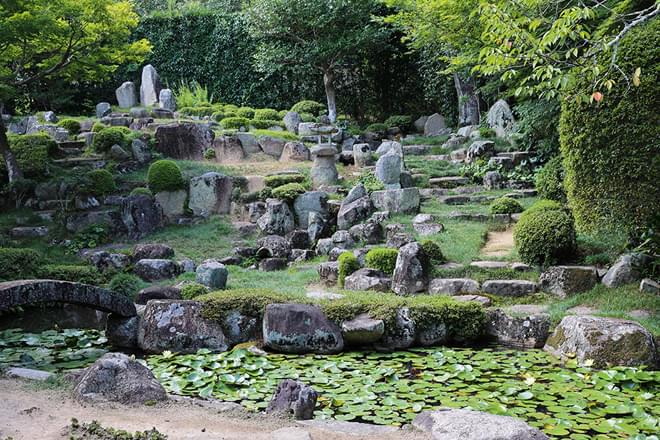
The temple also has a magnificent garden. It is sometimes called "Ishijuen" because of its stone arrangement. The balance of stones placed between waterfalls is exquisite and makes you want to look at the garden indefinitely.
- Name:
- Daitsuji Temple
- Address:
- 1815, Kobayashi, Yakage-cho, Oda-gun, Okayama
- Telephone number:
- 0866-82-0909
- Workshop:
- Zazen experience
Togenkyo Hanashi-no-sato Ikoi-no-yakata
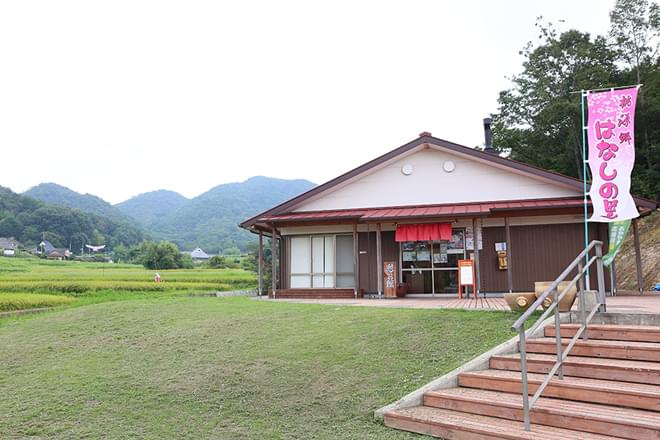
Visitors can experience seasonal agricultural activities such as picking shiitake mushrooms, making bancha (a type of green tea), and harvesting potatoes. Camping (¥1,000 per night for a spot, ¥4,000 to rent a tent, etc.) and barbecues (¥2,000 for a stove, ¥2,500 for food) are also popular. LP record concerts are held using tube amplifiers and large speakers, so visitors can enjoy music in nature without worrying about the volume.
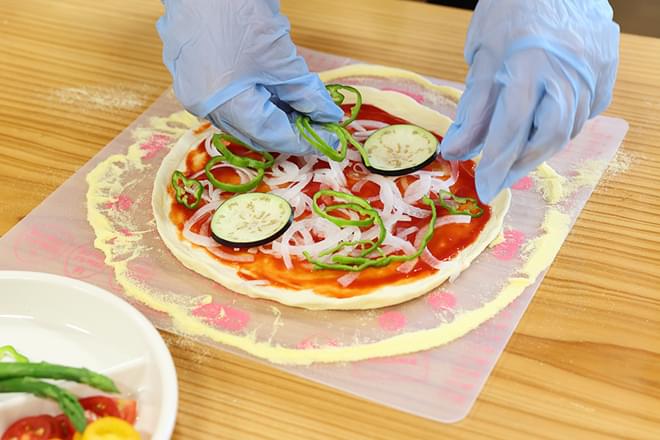
Agriculture is a major industry in Yakage, and one of the things you should try is making a pizza with local ingredients. The pizza-making experience starts with kneading and rolling out the dough. Once the dough is ready, top it with local vegetables such as onions, green peppers, asparagus, tomatoes, and cheese. Then the pizza is baked in an oven set up outside.
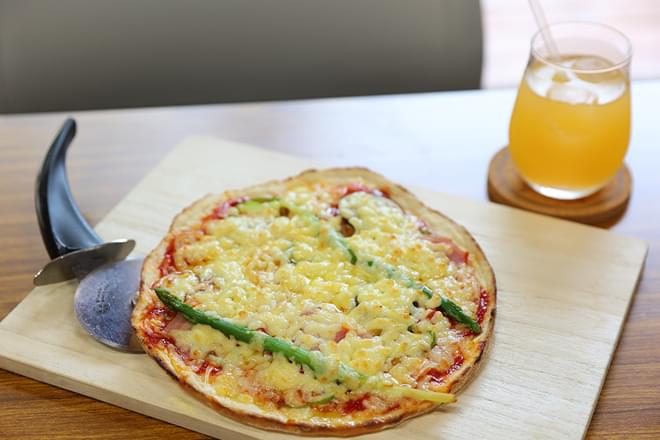
The pizza with toppings is baked in the oven. It is baked while slowly turning it on the griddle with tongs. After about 3 minutes, it is taken out of the oven and placed on a paulownia wood board. The dough, made from rice flour produced in Hanashi, has a sticky texture and tastes exceptionally good when freshly baked.
- Name:
- Togenkyo Hanashi-no-sato Ikoi-no-yakata
- Address:
- 3749 Kamitakasue, Yakage-cho, Oda-gun, Okayama
- Telephone number:
- 080-6309-6558 (Togenkyo Hanashi-no-sato Office)
- Email:
- hanasiland@gmail.com
- Open:
- Closed irregularly. Please check our Facebook page for our schedule.
- Activities:
- Oven-baked pizza making, camping, BBQ, shiitake mushroom picking, making bancha (a type of green tea), harvesting peanuts, harvesting yams, etc.
Yakage Senior Citizens Welfare Center (Kagura Mask Painting Experience)
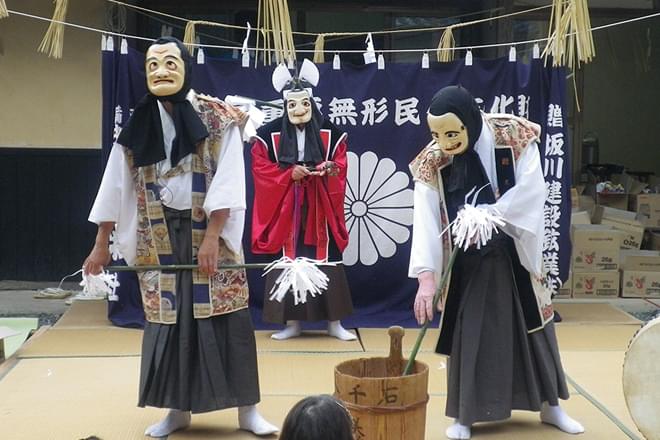
Bicchu Kagura is a traditional performing art of Okayama Prefecture and is known as the guardian deity of the community. It is said to have started about 200 years ago and is an essential part of the autumn festival. At the Yakage-cho Senior Citizens Welfare Center, visitors can try painting the masks used in the Kagura performance. The masks are made by residents from recycled newspaper as part of Yakage's recycling project. There are 10 different designs to choose from, including Ebisu and Daikoku masks from Japanese mythology and fairy tales, as well as Momotaro and Oni(demon) masks.
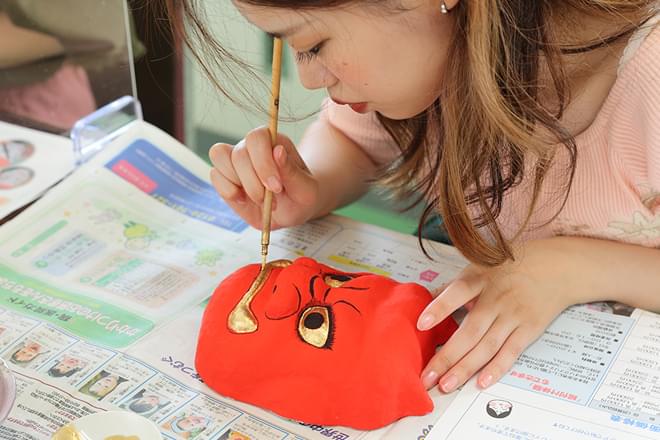
You will paint while referring to a sample mask. Start with the parts where black paint is used, such as eyebrows, eyelashes, and eyes. The instructor will give you advice on how to proceed, for example "For the eyes and beard, it is best to hold the brush upright and draw thin strokes with the tip of the brush".

Here are the finished masks. Time passed quickly because the experience was so engaging. After taking the masks home, you can attach them to the decorative stand (included in the fee) with wooden glue.
- Name:
- Yakage Senior Citizens Welfare Center (Kagura Mask Painting Experience)
- Address:
- 3012-1, Yakage, Yakage-cho, Oda-gun, Okayama
- Telephone number:
- 0866-83-1170
- Activity:
- Mask Painting

